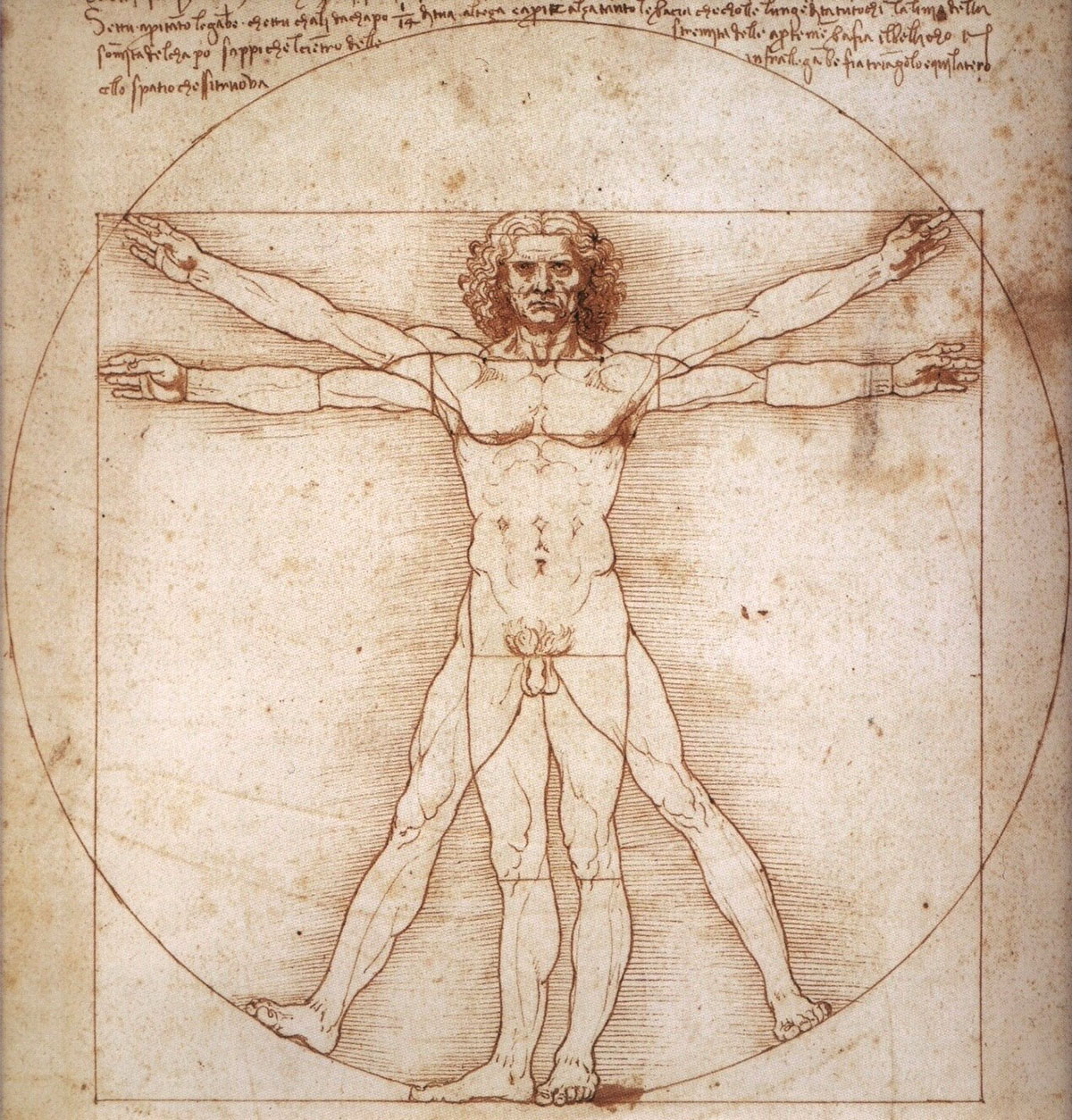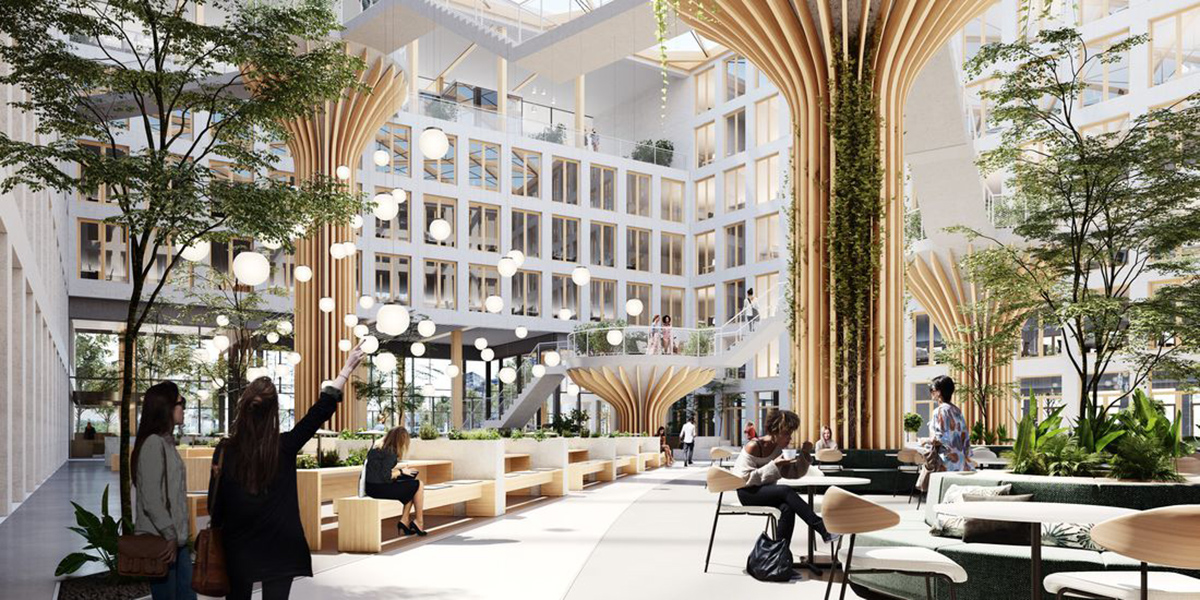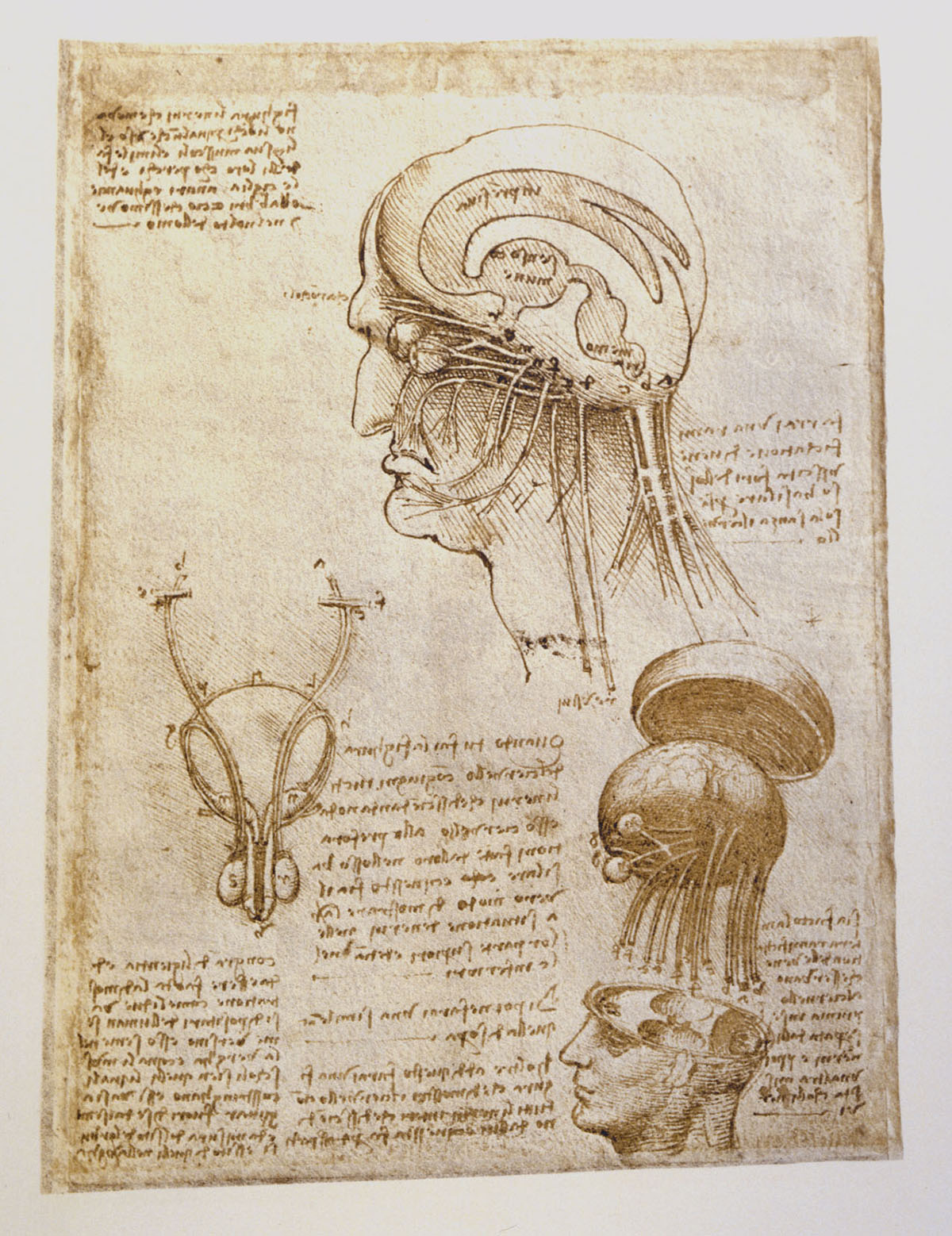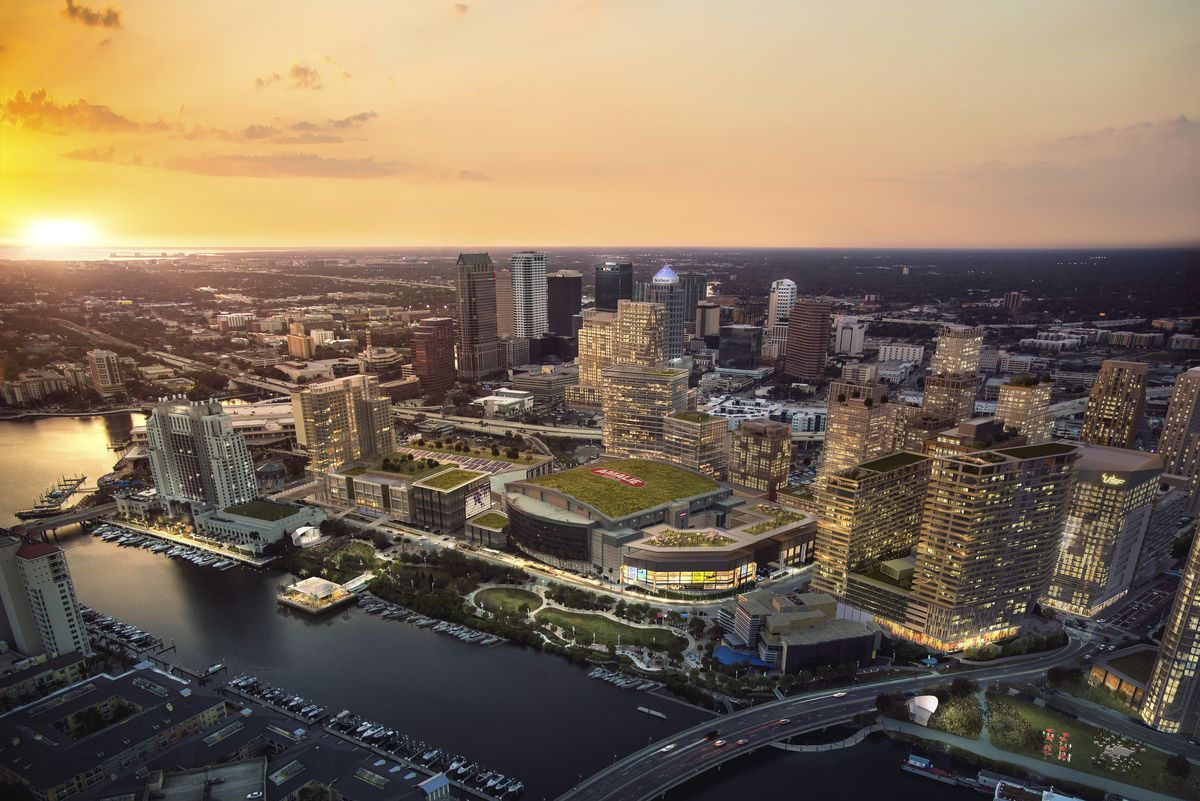Submitted by Antonello Magliozzi
Shaping the future of wellbeing in Italy
Italy Architecture News - Jun 30, 2019 - 07:29 12517 views

"Health and well-being have been promoted for thousands of years in Italy, with walkable cities, with healthy natural foods available, with a very important focus on all sustainability issues. Now we are really excited to bring the new protocol, a world of technology and products and services together here in Italy, to help advance the WELL agenda, looking at the ability of light, air and water quality, fitness and nutrition, to see and measure how people thrive.” This is how Rick Fedrizzi, global sustainability guru, IWBI CEO, presented the WELL Building Standard for the first time in Europe at the 2017 WellFerence Conference.
Launched in 2014, WELL v1 fulfills the 2012 Clinton Global Initiative (CGI), Commitment to Action, to improve how people lives indoors. Today, with 2,178 projects encompassing over 391 million square feet across 52 countries, WELL is the world’s premier rating system for advancing buildings and communities that enhance human health and well-being. The International WELL Building Institute (IWBI) is featured on Fast Company’s World’s Most Innovative Companies list for 2019, thanks to its community, mission and greenthink: an effort to rebalance the relationship between business, government and environment.

IWBI celebrates crossing the 1,000th WELL registered project mark – BuroHappold Building – 2018, Berlin. Image © IWBI
In the short and very quick development of the WELL protocol much has happened in 2018. The pilot standard WELL v2 was in fact launched in May 2018 to evolve the WELL v1, to meet the needs of any type of building everywhere in the world. The pilot program is now open to comments from the user community, researchers and experts until the end of 2019, before becoming a new official version. Also in 2018, thanks to its holistic background, its willingness to be a fair standard, open to local needs and guided by the best practices in the sector, the spread of WELL has strongly grown also in Europe with many adhesions. In fact, this year the first WELL buildings were certified in various European countries: in Ireland (Arup Cork Office), Finland (Green Building Partners Office), Sweden (Castellum Regional Office), Poland (BuroHappold Office), Netherlands (Cairn Real Estate) and Italy (Jacobs Office). We had the first certified Platinum project in Europe (The Crown Estate, UK), and the first double-certified project in Europe for the same property: the construction of the base structure and the completion of the interior spaces for the tenants (Sogeprom Headquarter, France). The largest Core & Shell project in Europe (Gmp Property, Spain) and the largest certified commercial space project in the world (Deloitte, UK). We also recorded the first projects in Norway, Turkey, Belgium, Romania and Luxembourg, with a total of 21 key countries in Europe.

Today in Italy 41 projects have already chosen the WELL Standard, two buildings have been registered and one is certified to a Silver level. The community of companies operating in the sector is growing fast and 18 professionals already have the qualification of WELL AP, Accredited Professional by IWBI, while others have undertaken a spontaneous accreditation process.
An interest also sanctioned by the Wellbeing Conference: WellFerence 2018, held in Milan on 19 November 2018 and organized by Apta Vitae Trust to illustrate the evolution of the WELL protocol in the new pilot v2 version together with the description of the best strategies for achieving the well-being in built spaces. A commitment that will continue in collaboration with the International Well Building Institute, with 19 other conferences until 2021, in order to promote a culture of well-being throughout the EMEA area. An action aimed at spreading sustainable criteria involving universities, research centers, foundations and companies for a wider development of the WELL protocol, to further develop the holistic approach pursuing people's well-being in our era. A theme included in the Circular Economy, which tells how "profit can save the planet", tells how WELL spaces are not just healthy spaces - they are also inclusive, resilient, sustainable, inspiring. Spaces for sustainable buildings in a healthier future.

A future that certainly comes from a search for innovation that does not ignore the knowledge of the past. A concept that, as emphasized by Rick Fedrizzi, is actually stronger in a country with a millenary history like Italy, which represents the home of beauty, art and wellness. Like Italy, with its ancient patrician villas, numerous medieval and Renaissance buildings and the rich environmental heritage of its cities. A country with a building and environmental structure that reflects both the innovation of a successful past and the teaching of bioclimatic principles on a human scale: global examples of a correct relationship between the built environment and the physical and emotional responses of people. A cultural background available to pursue the innovation of our time and the near future in a new context of social, economic and scientific research. A context in which "man" is placed at the center of every creative process, as well as the Vitruvian man of the Italian Renaissance by Leonardo da Vinci, with a vision that consider human nature as the measure for any art and science. A principle that still today constitutes an inexhaustible treasure.
Today, with the five hundredth anniversary of the death of Leonardo Da Vinci, Leonardo's anatomy studies are exposed in a comparison between art, science and medicine, at the University of Milan. Drawings that tell us "man" as a machine more perfect than those created by himself, which appear to us as exceptional and brilliant evidences of a scientific and holistic vision. A union between different humanistic and scientific disciplines so modern that it can inspire the same processes of fusion between tradition, technological innovation and scientific research inherent in the IWBI protocol. The global movement that recognizes in design the implementation of scientific and political strategies through basic concepts such as: air, water, nutrition, light, fitness, sound, mind, temperature, materials and community. Simple but universal concepts such as those that come from Vitruvian man.

Leonardo's anatomy studies. Image © Comitato Leonardo Cinquecento
WELL protocoll in fact develops specific research with the help of a scientific medical literature for environmental health. It has thus linked the main design, construction and management practices, by means of a "cause and effect" relationship, to human behavioral factors, to people's health indices and to demographic risk factors. In particular, IWBI produced monographic studies, WELL Country Briefs, to help bridge the link between national data available with global on health trends. In Italy, this study highlighted local solutions at the building level to help address the main public health problems on the base of national health epidemiological indicators, the most important public health data in the world: the Global Burden of Disease study. A study that shows how risk factors are considered modifiable risk factors - MRFs: metabolic, behavioral and environmental factors, and how they are susceptible of action to their elimination or mitigation.
WELL focuses on two out of the three types of MRFs – those behavioral and environmental – those that have the greatest potential of improving through both specific building policies and practices on the bases of the current scientific understanding. With a wide knowledge of the types of risk factors that contribute to most health loss in Italy, WELL defines and addresses the design and whole building's principles aiming to improve behavioral factors though “avoidable burden” and “addressable burden”: e.g. disability-adjusted life years (DALYs) due to smoking, an MRF. Top 10 MRFs addressed by WELL in Italy are: smoking, alcohol use, low whole grains, drug use, ambient particulate matter, low physical activity, occupational asbestos, low fruit, low vegetables, and low fiber. For each MRF, WELL give specific features and policy to pursue well-being and measure risk factors throughout the whole building lifecycle : from building design to operation.
The protocol created to improve well-being and health in inhabited environments is therefore born of local objectives, but at the same time pursues global goals for our planet. This is why IWBI joined the United Nations Global Compact on June 24, 2019, bringing together thousands of companies and civil society organizations from all sectors and parts of the world to implement the 10 principles of the United Nations Global Compact on rights human beings, work, the environment and the fight against corruption. IWBI has indeed identified in its standard how each of the Sustainable Development Goals (SDGs) are supported by the work of WELL. A sustainable development for every inhabited environment, from domestic spaces to those intended for education and work, to entire neighborhoods and cities, as represented by the example of the Water Street Tampa, in Florida (USA). The first application at the district level of the WELL Building Standard, with the creation of public areas with wide sidewalks that allow more walks, cycle paths for cyclists, abundant spaces for public green spaces to promote life in the open air, purification systems of the air, access to healthy food, green infrastructure and all the services of an urban waterfront. An example aligned with Italian tradition and style, to be evoked and pursued in all new projects: for the new districts of modern Italian cities, for urban recovery interventions, as well as all over the world.

Water Street Tampa, the first neighborhood in the world to get a wellness certification. Image © IWBI
Top image courtesy of Gallerie Accademia Venezia
All images courtesy of IWBI unless otherwise stated
> via IWBI
